
Everything You Ever Wanted to Know About Dog Cancer
Cancer is the most fatal disease affecting our dogs. Not unlike cancer in humans, there are a variety of ways to confront, diagnose, and treat a dog's cancer. There are several options that pet owners can take, ranging from conventional treatment like chemotherapy and surgery to holistic cancer treatment for dogs. Knowing what to expect will give pet parents the upper hand providing their pups the highest quality of life during the fight ahead.
Table of Contents
Dog cancer. No other words alone carry so much weight and fear. It’s the last thing any beloved pet owner wants to hear during a routine check up. Even though cancer is a terrifying diagnosis to receive from your veterinarian, it’s a reality that so many dog owners have to face at some point. You are not the first pet parent to feel like this and there are years of research and experience standing behind you and your pup. Understanding dog cancer is the first step towards recovery!
Dogs, like humans, can succumb to many types of cancer, and it helps to be prepared with some basic knowledge about cancer in dogs. Remember, this might be an exceptionally hard time, but you have to stay strong for your beloved canine companion. He or she needs you now more than ever!
Below you will learn the in's and out's of cancer, how it affects our dogs in particular, and how you both can prepare for it ahead of time.
1. What is Cancer?
Cancer is the unchecked growth of abnormal cells in a certain tissue of the body. This abnormal cell growth can result in a disturbance of the tissue’s ability to perform its normal functions. Some cancers are locally aggressive while others have a tendency to spread throughout the body, affecting more systems as they go.
Cancer starts when a healthy cell is damaged and starts to multiply out of control. This cell damage can occur when there is an over abundance of “free radicals”. Free radicals are unstable molecules that are aggressively trying to stabilize themselves by stealing electrons from other surrounding molecules. This continuous process creates a growing number of new free radicals. Without stabilization, these free radicals will grow in number and eventually cause damage to the body’s cells.
Some free radicals are normally present in the body but more accumulate as we age. Free radicals can increase when we are exposed to radiation, cigarette smoke, herbicides and toxic chemicals including many household cleaners and outdoor pollution. Without antioxidant treatment, they can develop to a point that is out of control and dangerous.
Causes of Canine Cancer
While all causes of cancer in dogs are not known, it is widely accepted that a combination of environmental and genetic factors contribute to its development.
Genetic Factors
Just like their people, dogs can have a familial history of disease. Unfortunately not all of us can trace our dog’s genetics back to individuals and we have to rely on the information that we have for certain breeds. If your breed is known to be predisposed to cancer more than other, then you need to be extra vigilant with check-ups and warning signs.
Environmental Factors
Cancerous risk factors can be present in a dog’s diet or in the environment. Different animals will display different sensitivities to particular risk factors. A pet parent should do well to generally avoid all well known cancerous agents.
- Ultraviolet radiation from the sun
- Second hand smoke
- Herbicides/pesticides
- Air pollution/smog
- Asbestos, radon, uranium, etc.
Weight
Of course dogs love food more than anything in the whole world. But an overweight dog has a greater chance of experiencing too much glucose, insulin sensitivity, inflammation, and oxidative stress, which are all factors in cancer. Allowing your dog to reach obesity puts him or her at a greater risk. Restricting the amount of calories your dog eats can prevent or delay the development of tumors.
Advanced Age
Aging pets experience a weakening immune system and a higher risk of malignant cells, leading to a higher likelihood of cancer in old dogs. Symptoms will be noticeable and should be dealt with as seriously as possible. The longer a pet lives the longer it is exposed to environmental cancerous risk factors, increasing his or her risk significantly.
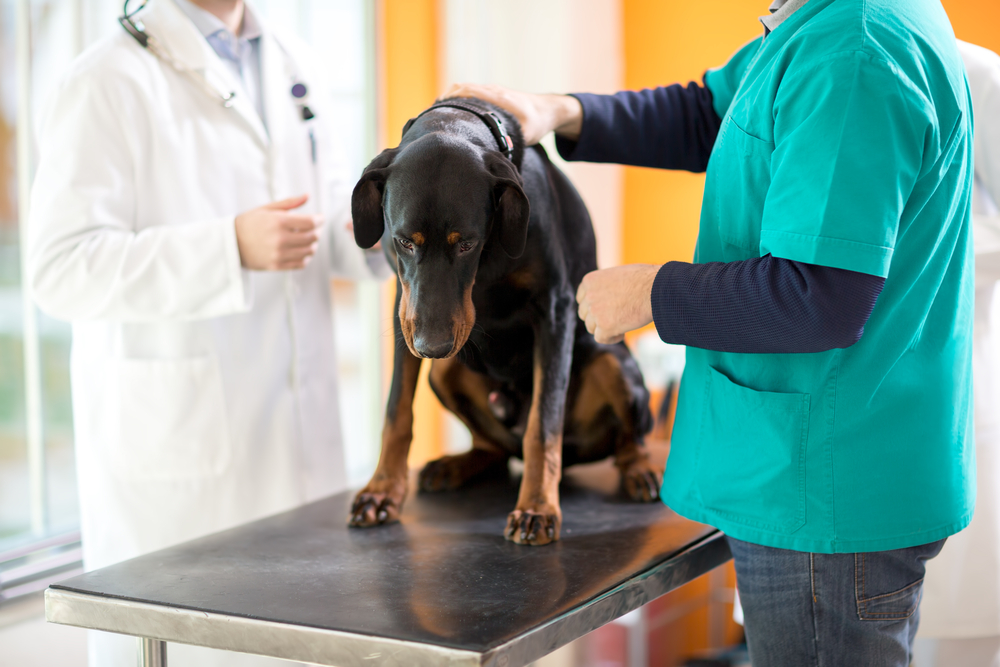
Breeds & Sex Most Commonly Affected
Certain breeds and types of dog have a higher than average likelihood of developing cancer. It is known that smaller dogs have a lower risk of cancer than larger dogs. However, it is unknown why one breed experiences this disease more than another, but modern studies are underway by the National Canine Cancer Foundation to determine why this is the case. The following breeds have a higher chance of developing cancer:
- Golden Retriever
- Boxer
- Rottweiler
- German Shepherd
- Bernese Mountain Dog
- Great Dane
For example, particular types of cancer are more common in certain sizes, ages, or sex of dogs.
- Bone cancer is more commonly seen in large breed dogs
- Mammary cancer almost exclusively affects females, especially those that have not been spayed.
- Skin cancers more commonly affect light-skinned dogs.
- Mast cell tumors on the skin have a higher incidence in Boxers and Boston terriers than many other breeds.
2. How Can Cancer Show Up in My Dog?
Even though the causes of cancer are very similar between dogs and humans, there are certain types of cancer that affect our pups more commonly than others. Understanding more about what your beloved pet is about to face will go a very long way as a supportive pet parent.
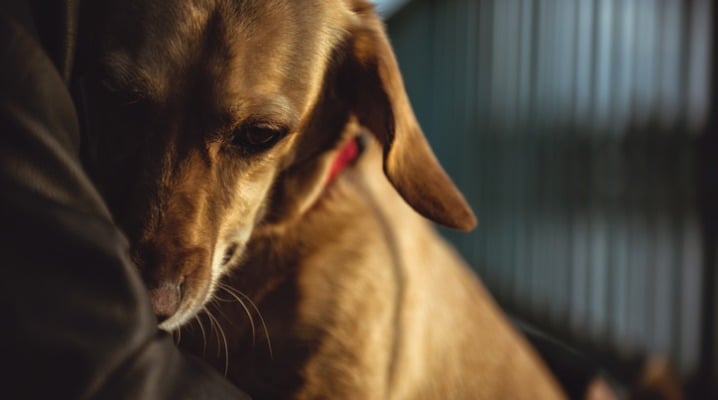
Most Common Types of Cancer in Dogs
We encourage you to do further research once your dog is properly diagnosed to know everything there is know, but bellow is a brief explanation about the most frequently-diagnosed cancer types in dogs:
- Lymphoma affects the lymphatic system, which delivers immune factors to all the body tissues to facilitate the ability to fight disease and infection. Lymphoma commonly affects the lymph nodes, gastrointestinal tract, spleen, and liver. It may also be found in skin forms, affect the bone marrow, or develop in the nervous system.
- Hemangiosarcoma is a type of cancer that affects blood vessels in dogs. The most common form affects the spleen, resulting in a large tumor or tumors that may burst and bleed suddenly. This leads to internal bleeding, collapse, and possibly death. Hemangiosarcoma may also affect the heart or other organs and the skin. Because it affects blood vessels, this type of cancer often spreads from its primary point, affecting multiple body systems.
- Osteosarcoma is a common type of bone cancer in dogs. Up to 85% of the time, osteosarcoma affects the bones of the legs, though it can affect any bone in the body including the jaw, skull, spinal column, and rib bones.
- Mast cell tumors are cancers that arise from mast cells, a type of white blood cell present in all of the body’s tissues. These cells are most prominent in the skin, respiratory tract, and gastrointestinal tract - where mast cell tumors are most frequently found. These tumors can range from fairly benign, or non-aggressive and non-spreading, to extremely malignant, aggressively attacking tissue and spreading to other body sites.
- Transitional cell carcinoma is the most common cancer found in the urinary tracts of dogs, including the kidneys, ureters, bladder, and urethra. The most common site for transitional cell carcinoma in dogs is the bladder. This cancer will display as bloody urine, straining to urinate, and complete blockage of the urinary tract if the tumor becomes large enough and is located near the bladder outlet.
- Mammary cancer affects the mammary, or breast, tissue in dogs. It is most common in females, especially those that have not been spayed. These tumors may be benign or aggressive.
- Lung cancer in dogs is most commonly due to cancer that started elsewhere in the body and metastasized or spread from there. Mammary cancer is a cancer that commonly metastasizes to the lungs in dogs.
3. What Are the Most Common Signs of Cancer in Dogs?
Before cancer can be diagnosed, it’s up to us as pet parents to watch for changes in our dogs’ behavior, appearance, and habits. Dogs can cover up their discomfort and pain very well, and often their enthusiasm can make it seem like they are perfectly healthy. This is why we need to stay alert and take action if we notice anything.
Recommended Reading |
|
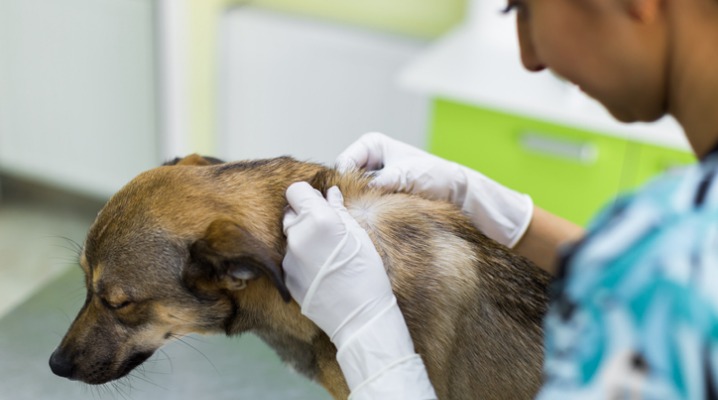 |
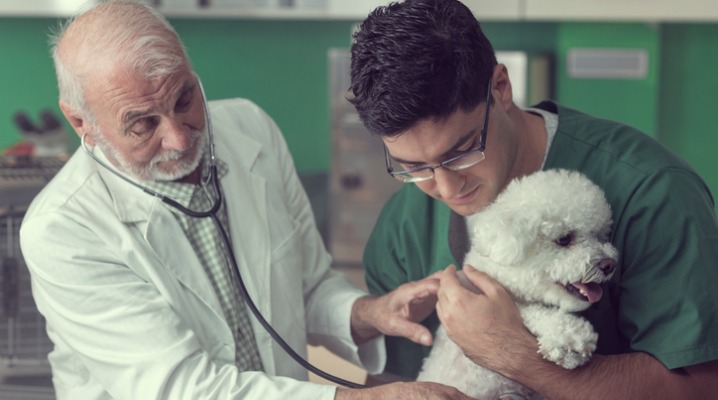 |
|
|
|
The at-home signs of a dog’s developing cancer can vary depending on the type of cancer that is involved. Below are some of the most common warning signs that may indicate cancer. Prepare to take your dog to the veterinarian if you notice any of them.
- Weight loss. Many cancers cause weight loss and muscle wasting, which can be noticed most readily on the head, over the upper rear legs and hips, and along the spine.
- Drooling and/or foul breath. Cancer inside the mouth and certain types of internal cancer can cause drooling and/or bad breath in dogs.
- Lumps or bumps. Any lump on or under the skin should be checked immediately by your veterinarian. They can also be seen protruding from the abdomen when a dog lies or sits in a certain position.
- Vomiting or diarrhea. Cancer of various systems can affect gastrointestinal motility and cause vomiting and diarrhea.
- Decreased appetite. Dogs with cancer generally develop very low or absent appetites over time.
- Collapse. Certain types of cancer can result in sudden collapse. This is an emergency situation, so take your dog needs to be seen by a veterinarian immediately.
- Coughing, increased panting. Tumors in the lungs or around the throat can result in coughing, panting, or increased respiratory rate and difficulty breathing.
- Changes in behavior. Dogs with cancer often become listless or withdrawn and experience anemic lethargy. They usually don’t want to play as much and generally lay around more.
- Pale gums. This may be difficult to evaluate, but pale gums mean that something is going wrong with your dog’s circulation and may be a sign of cancer.
- Lameness or limping. Dogs with bone tumors and certain types of cancer that affect the lymphatic system often limp on one or multiple legs.
Remember, our dogs can be very good at masking the pain and suffering they are experiencing. An excited dog can seem like he or she has a new lease on life all of a sudden, but it's up to you as a pet parent to be perceptive and extra-cautious. At the same time, any of these signs of illness can indicate medical conditions other than cancer, so it can be hard to tell yourself. If you see any of these or other signs of sickness in your dog, visit your veterinarian for proper diagnosis.
4. How Will My Vet Diagnose and Treat My Dog’s Cancer?
Depending on the type of cancer and the part of the body it typically affects, your dog’s cancer diagnosis can either be fairly straight-forward or more complicated. After you suspect your dog is experiencing cancer-like symptoms of any sort and made a veterinarian appointment, it's important to know what to expect.
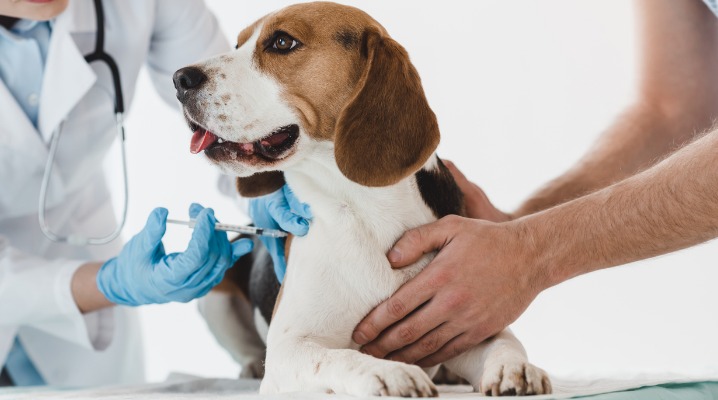
Diagnosing Canine Cancer
Your vet will ask you for your pup's medical history and ask you to explain any signs of illness that you have observed at home. Then, based on a full physical examination is complete, some or all of the following diagnostic tests may be performed:
- CBC - A complete blood count can give your veterinarian information about your dog’s red and white blood cells and platelets, among other things. This data can be extremely useful for cancer diagnosis, staging, and developing a prognosis.
- Blood chemistries - These blood tests mainly evaluate the organ functions of your dog. Certain cancers affect specific body systems by being located there while others affect them secondarily. Knowing how your dog’s general body function is doing will help your veterinarian develop a treatment plan and prognosis.
- Urinalysis - This test evaluates your dog’s urine. This can help diagnose bladder cancers, cancers located in or affecting the kidneys, and also aid in the evaluation of your dog’s overall health status if she has been diagnosed with another type of cancer.
- FNA - Fine needle aspirate is a test that is done by placing a needle into an abnormal area such as a tumor and drawing out cells so that they may be examined microscopically. This test is most often performed on skin tumors, but it may also be done on certain internal tumors with an ultrasound.
- Biopsy - This procedure is performed by removing a larger piece of a tumor or diseased area to evaluate microscopically. Biopsy may be performed by removing an entire tumor or a piece of a tumor if it cannot be removed.
- X-rays - Used to look for tumors inside the body or to search for the spread of cancers that have already been diagnosed.
- Ultrasound - This technology uses sound waves to create a picture of internal body structures. It is useful in diagnosing smaller tumors or seeing them in more detail than can be done with an x-ray.
- MRI - This test uses magnetic fields and radio waves to create images of internal tissues and structures. It is often used to see smaller or more detailed pictures of tumors within a dog’s body.
- CT scan - This is a type of x-ray that uses the aid of a computer to generate three dimensional and cross-sectional views of internal structures in order to look for abnormalities.
Determining Appropriate Treatment
Like any cancer diagnosis, there is not one solution for every situation. There are as many types of cancer as there are treatment options. The treatment plan that your vet decides upon depends on the following factors:
- Type of cancer present - Treatments have been developed for each type of canine cancer that may be present. These are the result of years of study and practice to learn the type of treatment that each cancer responds best to. Your veterinarian may refer you to a veterinary oncologist (a cancer specialist) to treat your dog’s cancer
- Stage of cancer - During the diagnostic process, your dog’s cancer will be staged. This is done by evaluating how aggressive the cancer cells are, how widely the cancer has spread, and how the cancer is acting in the body. Higher grade cancers may require more aggressive treatment options.
- Age of dog - Your dog’s age will be taken into account by your veterinarian when developing a cancer treatment plan. Older dogs may not be able to tolerate the same treatments that younger dogs can.
- General condition of dog - If your dog has other health conditions such as kidney disease, heart disease, diabetes, or any other complicating issues, the cancer treatment plan may need to be adjusted.
Treating Cancer in Dogs
Dog treatment is not unlike what you may be familiar with in terms of how humans experience cancer treatment. In fact, dogs and humans have such similarities in cancer that a successful treatment for one species can usually also help the other. Treatment recommended by your veterinarian may include one or a combination of the following:
- Chemotherapy - A very common type of treatment for many cancers, this involves treating with medication. Sometimes the medication can be taken orally at home, or done intravenously (IV) at the veterinary clinic.
- Radiation - This treatment involves delivering highly focused beams of radiation directly to a tumor site. It may be a primary treatment, but it is often used in addition to chemotherapy.
- Surgery - In cases where there is a defined tumor, veterinarians will conduct surgery. This can often be curative with no further therapy required. Other times, surgery must be followed up with chemotherapy and/or radiation.
- Immunotherapy - These treatments focus on triggering a dog’s immune system to better fight the cancer.
- Palliative care - If an owner elects not to use any of the above treatments for a dog with cancer because of cost, poor prognosis, age, or general health condition, palliative care can be used to manage pain, nausea, and other signs of cancer. These treatments don’t stop or slow down the cancer, but they do help the dog to be more comfortable in the last phase of life.
Is There a Dog Cancer Cure?
Before we determine what we mean by cures, it’s important to understand the difference between a cure and remission:
- Cure: Elimination of all traces of cancerous cells from the body without risk of return.
- Remission: There are few to no signs of cancer in the body.
- Complete remission: There aren’t any detectable signs of symptoms of cancer.
In veterinary medicine, the goal of cancer treatment is entering remission, not curing it. Most often a curative treatment dosage would make too many of our dogs sick. Veterinarians made the decision that dogs should not feel sick during treatment in an effort to maximize the quality of life. Treatment can usually achieve remission, and in fact even cure it in some cases.
5. Are There Alternative Therapies for Cancer in Dogs?
Traditional medical treatments for cancer can really take a toll on your poor dog’s system, causing complications in other parts of the body. Often times the treatment will be less than effective, and the cancer will return. On top of everything else, cancer treatment can be very expensive.
Are there alternatives to traditional medicine for dogs? Natural holistic methods do exist to support your dog facing a long road of cancer recovery. Alternative cancer care options for dogs don’t necessarily have to replace treatment. Many alternative therapies can be used to compliment your veterinarian’s plan, making the whole treatment even more effective. Some of these include:
- Chiropractic care - Manipulation of the spine by a qualified veterinary practitioner can help dogs with cancer manage pain, nausea, and other side effects of cancer.
- Acupuncture - This treatment, applying thin needles to specific points of the body has been used for centuries in humans and animals with cancer. The effects can help decrease pain and stimulate the body’s immune system to help fight the disease.
- Herbal medication - Herbs and herbal mixes can help a dog with cancer by supporting organ systems, increasing immune function, and decreasing free radicals in the body that can cause further disease.
- Antioxidant therapy - Cancer cells cause free radical formation in the body, and antioxidants can neutralize these and decrease further damage. Antioxidants include Vitamins A and E and selenium.
-
Dietary therapy - A natural, holistic, grain-free homemade diet for cancer support will be high in Omega 3 fatty acids. This diet will help support your dog’s body slow the spread and growth of cancers.
Medicinal Mushrooms for Dogs with Cancer
The power of medicinal mushrooms should not be underestimated. These special fungi are used to treat a host of issues that revolve around the health of the immune system. Research has show that certain medicinal mushrooms possess anti-cancer and anti-tumor compounds.
Edible mushrooms all contain various amounts of beta-glucan, an important compound that helps to give mushrooms their health supporting properties. Additionally, mushrooms are rich in polysaccharides, which are complex sugars that are a great source of protein and B vitamins and promote an overall boost in health benefits.
Consider including these common species of medicinal mushrooms into your dog's complementary treatment:
- Turkey Tail - This beautifully shaped polypore has been extensively researched for its significant immune system support, probably more than any other mushroom in the world. In Japan, a derivative of Turkey Tail comprised of polysaccharides is an approved product for cancer treatment.
- Maitake - Another immune-enhancing medicinal mushroom, Maitake has anti-tumor and anti-viral benefits. It has also been studied for its beneficial effects on blood pressure, blood cholesterol, and its ability to help support normal blood sugar. For this reason, we recommend using caution when administering alongside blood-sugar-lowering medication, as Maitake may enhance its effects.
- Reishi - A suitable adjunct to standard cancer therapies, Reishi is also indicated for growths and general inflammation. It is one of the prized "king herbs" for reducing stress, maintaining good energy levels, and balancing hormones.
- Agaricus blazei - This immune-supporting mushroom offers a high content of polysaccharides and cellular-growth supporting compounds, helping to activate the immune system and protect the body from infection and disease.
- Cordyceps - Another mushroom offering strong immune supporting properties, research shows that these species is essential to boost your dog’s health, stave off dangerous diseases, soothe inflammation, and enhance cardiovascular functionality.
-
Shiitake (Lentinula edodes)
These well-known mushroom are extremely rich in amino acids, enzymes and health-supporting minerals like zinc, iron and calcium. They are a great addition to maintaining your dog’s health by stimulating white blood cells and improving circulation.
6. How Should I Care For My Dog During Treatment?
Hopefully, knowing the signs, causes, diagnosis, and treatments associated with canine cancer will help you be prepared if it happens to your family’s furry friend. During this time it’s not uncommon to feel powerless, but there is a lot you can do at home to ensure your pup has the best fighting chance for a high quality of life.
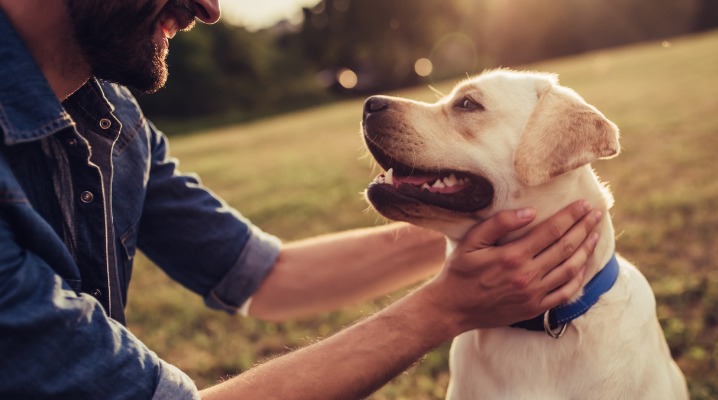
- Stay positive: Approach treatment with a positive attitude. Our dogs’ moods are extremely in-tune with our own, and you can help them stay content during the struggle ahead.
- Find your own support: Coping with dog cancer is one of the hardest things we can do as pet parents. To stay strong for your dog you need your own support systems. Find someone to talk to who has been through this before. It's an incredibly tragic ordeal, but it's part of raising your beloved pup and being there for him or her every step of the way.
- Listen to your vet: Follow the plan set out by your veterinarian and stick to it like glue. If you are curious about other treatment options be sure to speak to your vet first. Maintain communication as they are your best resource for helping you maintain a good quality of life for your dog.
- Complement treatment: Keep your dog happy, healthy, and comfortable. A high quality of life can mean more exercise, a nutritious diet, herbal supplementation, attention, and lots of love.
- Put his/her needs first: We know you want to do everything for your dog, but often aggressive treatment is not always the best option for advanced cancer in older animals. Treatment could cause more grief to your dog than they are ready for. Make sure you are doing the right thing for them and not out of selfish motivations
- Be realistic: There may come a time when medical treatment can’t improve a poor prognosis. At this point the goal shifts from directly treating your dog’s cancer to keeping him or her comfortable and content. Enjoy your final days together as best as is possible!



